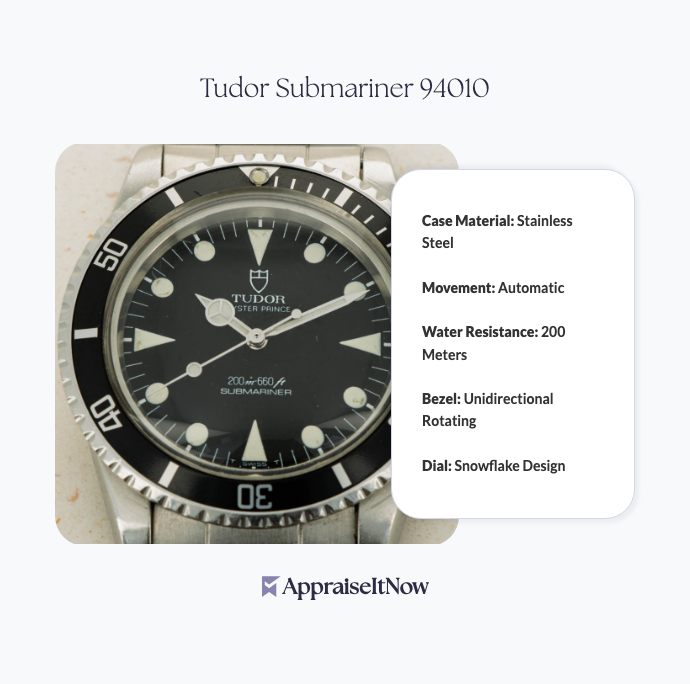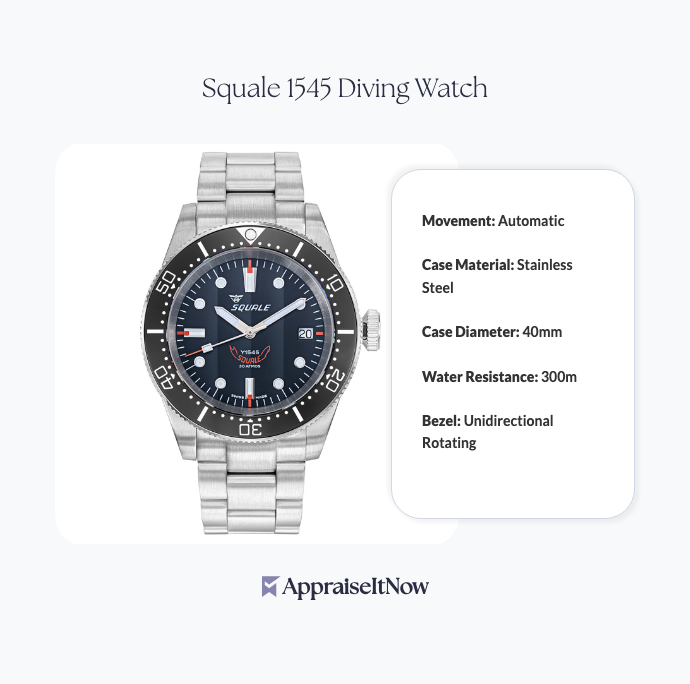<h1>How to Get Your Ball Railroad Watch Appraised</h1>
<p>The Ball Railroad Watch holds a special place in timepiece history, representing a century of precision engineering and timekeeping excellence. Whether you've inherited one, discovered it in an antique shop, or own a family heirloom, understanding how to properly appraise your Ball Railroad Watch ensures you know its true value for insurance, sale, or collection documentation purposes. With estimated values ranging from <strong>$1,000 to $3,000</strong>, getting an accurate professional appraisal is essential.</p>
<h2>Understanding Your Ball Railroad Watch's Heritage</h2>
<p>The Ball Railroad Watch first appeared in <strong>1891</strong>, specifically designed to meet the exacting timekeeping standards demanded by the railroad industry. These watches weren't mere accessories—they were critical safety instruments. Railroads required precise timekeeping to prevent collisions and coordinate schedules across vast networks, making the watch's reliability literally a matter of life and death. This historical significance directly impacts your watch's collectible value today.</p>
<p>Your Ball Railroad Watch likely features a stainless steel case, self-winding automatic movement, and a highly legible dial with luminous hands and markers—design elements that persist because they worked brilliantly over a century ago. The watch's <strong>50-meter water resistance</strong> and durable leather strap reflect practical engineering priorities. What makes these watches so valuable? It's the convergence of exceptional reliability, military and civilian service heritage, and the fact that these precision instruments continue functioning reliably today.</p>
<div class="callout tip"><p><strong>Collector's Note</strong></p>
<p>Ball Railroad Watches with documented provenance—such as original railroad employment records or dated service documentation—often command 15-20% premiums over standard examples.</p></div>
<h2>Why Professional Railroad Watch Appraisal Matters</h2>
<p>Are railroad watches valuable? Absolutely. Beyond their $1,000-$3,000 price range, Ball Railroad Watches represent tangible connections to transportation history and mechanical precision. When evaluating <a href="/types/jewelry">jewelry</a> and timepieces through professional appraisal services, certified experts examine multiple factors that casual collectors might overlook.</p>
<p>A professional appraisal provides documentation accepted by insurance companies, auction houses, and legal proceedings. Whether you're seeking coverage for your collection or planning to sell through an estate, having USPAP-compliant documentation from credentialed experts—such as those certified by AAA, ISA, ASA, CAGA, or AMEA—protects your interests and establishes fair market value. Our guide on <a href="/blog/appraising-luxury-watches-determining-the-value-of-timepiece-investments">luxury watch appraisals</a> covers detailed valuation methodologies for timepiece investments.</p>
<h2>Key Factors That Appraisers Evaluate</h2>
<p>When you bring your Ball Railroad Watch to an appraiser, they assess multiple dimensions that determine its specific value within the market range. The condition of your watch's case, dial, and movement tells the story of how it was cared for—and directly impacts valuation.</p>
<p><strong>Case and Dial Condition</strong> forms the foundation of value assessment. Appraisers examine whether the stainless steel case shows appropriate patina or has been over-polished, whether the dial retains original printing and luminous markers, and whether the crystal remains clear or has developed cloudiness. A watch with original dial printing and minimal case polishing commands significantly more than a refinished example. The luminous hands and markers, while functional, also affect desirability—original tritium or radium examples carry historical weight that collectors value.</p>
<p><strong>Movement Authenticity and Function</strong> determines whether your Ball Railroad Watch represents a working investment or display piece. The self-winding automatic movement should operate smoothly with appropriate beat rates. Appraisers test the watch's timekeeping accuracy, examining the hairspring and balance wheel for damage. A movement that keeps accurate time within industry standards enhances value, while movements requiring significant repair diminish it. Do Ball watches hold their value? Well-maintained examples with functioning movements demonstrate significantly better retention than those needing extensive service.</p>
<p><strong>Serial Numbers and Documentation</strong> establish authenticity and manufacturing period. Ball watches employed serial numbering systems that allow appraisers to verify production year and identify whether your watch represents an original production run or a later iteration. Original documentation—including boxes, papers, or receipts—can boost value by 10-15%. Even without original paperwork, professional appraisers use technical knowledge to verify legitimacy.</p>
<div class="callout note"><p><strong>Authenticity Insight</strong></p>
<p>The quality of Ball's manufacturing practices means counterfeit examples are relatively rare, though professional verification remains important for significant purchases or sales.</p></div>
<h2>Market Trends and Comparable Sales</h2>
<p>How much are Ball watches worth in today's market? The answer depends on model variations, condition, and current collector demand. The railroad watch sector has experienced steady appreciation, particularly as mechanical timepiece collecting grows among younger enthusiasts seeking tangible, repairable alternatives to digital devices. Understanding market trends helps explain why your specific example commands its particular value within the broader range.</p>
<p>Ball Railroad Watches compete within the broader <a href="/types/memorabilia-and-collectibles">memorabilia and collectibles</a> market where condition and provenance drive premiums. Recent sales data shows examples in excellent condition with functioning movements reaching the upper range of $2,500-$3,000, while watches requiring restoration typically trade in the $800-$1,500 range. The question "What brand of old watches are worth money?" often points toward Ball, Elgin, and Hamilton—brands with strong railroad heritage and proven mechanical reliability.</p>
<p>Consider how condition affects value: an example with original dial, luminous hands intact, functioning movement, and minimal case wear might appraise at $2,800, while an identical model requiring dial restoration and movement service could value at $1,200. This 130% spread emphasizes why professional condition assessment matters.</p>
<h2>Identifying Your Specific Ball Railroad Watch Model</h2>
<p>Professional appraisers need to identify your exact model, as Ball produced various railroad watches with different specifications and values. The company's product line evolved through different eras, with some models considered more desirable than others. Helpful documentation includes model names, reference numbers visible on the watch case, and any original paperwork.</p>
<p>How do I check the value of my watch? Start by noting visible details: Is your watch manual wind or automatic? What's the case material and approximate diameter? Can you read any model designation on the dial or caseback? These basic observations help appraisers narrow specifications and research comparable sales. The bridge between your watch's technical specifications and market value lies in understanding which models achieved widespread use versus limited production—a distinction only professional expertise can reliably establish.</p>
<h2>Preparing Your Watch for Professional Appraisal</h2>
<p>Before bringing your Ball Railroad Watch to an appraiser, take several preparatory steps that enhance the appraisal process. Clean the watch gently with a soft cloth to remove surface dust, but avoid aggressive cleaning that might damage the dial or case finish. Photograph your watch from multiple angles—showing the dial, caseback (if it opens), side profile, and any visible model markings. Include photos of the movement if you're comfortable opening the caseback, as movement condition significantly impacts value.</p>
<p>Compile any documentation you possess—original boxes, papers, repair receipts, or family provenance stories. While these details might seem minor, they contextualize your watch's history and demonstrate proper care. Is a 20-year-old watch considered vintage? In horological terms, yes—and appraisers value watches with documented ownership history and maintenance records. Our guide on <a href="/blog/tips-for-obtaining-accurate-personal-property-appraisals">tips for obtaining accurate personal property appraisals</a> provides comprehensive preparation strategies.</p>
<div class="callout tip"><p><strong>Preparation Priority</strong></p>
<p>Avoid attempting repairs or aggressive cleaning before appraisal. Professional appraisers assess the watch in its current condition, and modifications made beforehand might actually diminish value by disrupting originality.</p></div>
<h2>Choosing a Qualified Appraiser</h2>
<p>Not all watch appraisers possess equal expertise with railroad watches and mechanical timepieces. You need someone with specific knowledge of <a href="/blog/what-you-need-to-know-about-rare-watch-appraisals">rare watch appraisals</a> who understands railroad watch collecting communities and market dynamics. Look for appraisers credentialed through recognized organizations like the American Society of Appraisers (ASA) or American Academy of Appraisers (AAA), particularly those with specialization in watches and <a href="/types/jewelry">jewelry</a>.</p>
<p>The appraiser should request to examine your watch in person, take detailed photographs, document serial numbers and specific features, and research comparable sales to establish fair market value. Avoid appraisers who provide rough estimates without examining the physical watch or those who seem unfamiliar with mechanical movement assessment. <strong>AppraiseItNow</strong> connects you with certified appraisers across the U.S. who specialize in timepiece valuations and deliver USPAP-compliant reports suitable for insurance and legal purposes.</p>
<h2>Insurance and Documentation</h2>
<p>Once you have a professional appraisal, use it immediately for insurance purposes. Schedule your Ball Railroad Watch on a homeowner's or renter's policy as a scheduled personal property item, particularly if it's valued above $1,000. Your appraisal provides the documentation insurers need to establish replacement value and process claims quickly if loss occurs.</p>
<p>Update your appraisal every three to five years, as market values shift with collector demand and economic conditions. A watch appraised at $2,000 five years ago might have appreciated to $2,300 or depreciated to $1,700 depending on market trends and condition changes. Our resources on <a href="/blog/what-you-need-to-know-about-getting-an-appraisal-for-investment-purposes">getting an appraisal for investment purposes</a> explain how professional valuations protect investments over time.</p>
<h2>Understanding Railroad Watch Heritage and Value</h2>
<p>Is BALL a high-end watch? The answer nuances differently depending on context. Ball Engineering Company occupied a middle ground between luxury Swiss manufactures and mass-market American watchmakers. Their railroad watches earned respect through precision and reliability rather than prestige branding. This positioning actually benefits collectors today—Ball Railroad Watches remain affordable compared to contemporary luxury brands while offering authentic mechanical engineering and historical significance.</p>
<p>The three holy grail watches that collectors frequently reference typically include vintage Rolex sports models, specific Omega examples, and certain Seiko pieces. While Ball Railroad Watches don't command prices in those stratospheric ranges, they occupy respected positions within mechanical timepiece collecting. For enthusiasts prioritizing functionality, reliability, and historical narrative over pure prestige, Ball represents authentic collecting value.</p>
<div class="callout note"><p><strong>Value Perspective</strong></p>
<p>Ball Railroad Watches offer collectors the unique appeal of owning a piece of transportation infrastructure history—watches that literally kept trains running on time—at relatively accessible prices compared to haute horlogerie offerings.</p></div>
<h2>Selling Your Ball Railroad Watch</h2>
<p>If you're considering selling your appraised Ball Railroad Watch, the appraisal provides a professional foundation for pricing. Specialized watch dealers, auction houses handling <a href="/types/memorabilia-and-collectibles">memorabilia and collectibles</a>, and online platforms focused on horological sales typically attract serious buyers willing to pay fair market value for quality examples. The best way to sell old watches involves matching your watch with the appropriate audience—mechanical watch enthusiasts, railroad history collectors, or general vintage watch buyers depending on your watch's specific appeal.</p>
<p>Your professional appraisal report demonstrates good faith and knowledgeable pricing to potential buyers, particularly important when selling privately. Detailed condition documentation with supporting photographs builds buyer confidence and justifies asking price. Many serious collectors prefer watches with existing professional documentation, viewing it as assurance of authenticity and condition accuracy.</p>
<hr />
<div class="callout note"><p><strong>Key Takeaway</strong></p>
<p>Your Ball Railroad Watch represents a tangible piece of American transportation history with documented market value between $1,000 and $3,000. Professional appraisal from certified experts provides the authentic valuation, detailed documentation, and market insight you need—whether you're insuring a cherished collection piece, planning a sale, or simply understanding what you own. Connect with credentialed appraisers through <strong>AppraiseItNow</strong> today to receive USPAP-compliant valuations that stand up to professional and legal standards.</p></div>







.avif)







